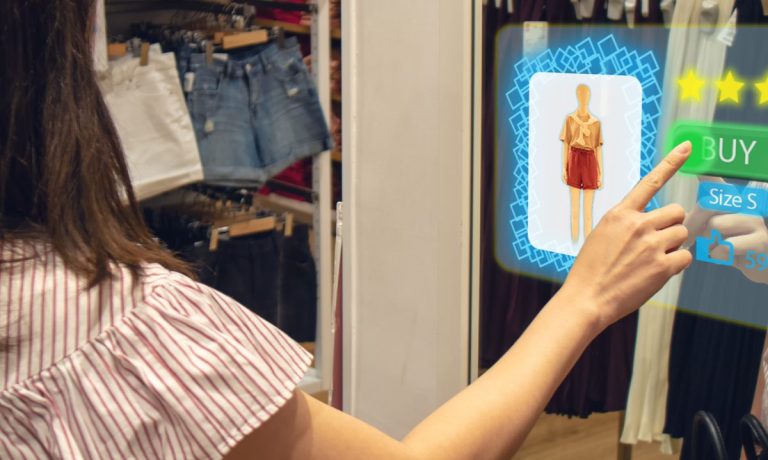
In the thick of summer 2020 lockdowns, Karen Webster wrote this: “It isn’t as if the physical world is irrelevant to [shoppers], but their interactions in it are different now. The consumer’s expectations of those experiences are now different, too — they are digital-first, with physical complementing that experience in some way.”
That was only a few months into what would become a long-lasting, world-changing crisis. Here in early 2022, shoppers who abandoned physical settings in legions keep mounting a store comeback, but omicron is teaching a lesson in how fragile recovery is. For physical retail, that means working harder and investing shrewdly in experiential and payments technology that creates in-person shopping magic.
Illustrating this, news broke on Thursday (Jan. 20) of Amazon’s forthcoming move into digital fitting rooms that connect with the Amazon app for an omnichannel experience melding physical and digital.
See also: Amazon Opening Fashion Store with Digital Fitting Rooms
Apps, data and the personalization they offer are now beginning to power the omnichannel journeys of which brick-and-mortar stores remain a vital element, offering the sense of place that only stores can.
Using insights from reimagined stores, physical retailers are taking on the eCommerce juggernaut.
Among the ways physical is competing more hotly with eCommerce is at checkout. Offering consumers self-serve payment options recreates aspects of online checkout and keeps COVID paranoia at bay.
According to the study, Today’s Self-Service Shopping Journey: The New Retail Expectation, a PYMNTS collaboration with Toshiba Global Commerce Solutions, “Adoption of self-service allows merchants to bolster customer value by strategically deploying staff members to higher-value activities or those that require human intervention.”
Merchants need to get on the stick when it comes to consumer self-serve wishes, however, as the study found that “Kiosk adoption rates remain lower than consumers’ expressed interest in using them, according to recent PYMNTS research, despite the advantages of kiosk-based self-checkout. Only one-third of consumers prefer traditional checkout lines, while over 80 percent want to try nontraditional checkout alternatives, such as self-service.”
As Amazon experiments with in-store digital fitting rooms, brick-and-mortar operators are perfecting other store-based draws.
Looking at Target’s efforts to keep store traffic up, RIS News reported that in Q2 2021, “Target added another 5,000 items to the assortment available for pickup and Drive Up, ranging from items in adult beverages to fresh pet food, meal kits, and greeting cards. The move is working to boost its sales. Target saw double-digit growth in its fresh categories, benefiting from the expansion in the number of items available for Drive Up, said chief growth officer Christina Hennington.”
Grocery may need less of a boost than other retail categories as traffic held up during the pandemic, grocery giant Kroger said in a press release on Monday (Jan. 18) that it’s playing to pandemic-era behaviors offline and online, tapping the appetite for in-store shopping to improve home life.
Just releasing its 2022 Food Trends Report, Kroger Senior Vice President and Chief Merchant and Marketing Officer Stuart Aitken said, “Last year, even as many Americans returned to work and eased back into social gatherings, it became apparent that new habits were formed in 2020 and that they are here to stay – including cooking more at home. Customers are enjoying the convenience, affordability and just plain fun that comes from preparing meals at home.”
Get the study: Today’s Self-Service Shopping Journey: The New Retail Expectation